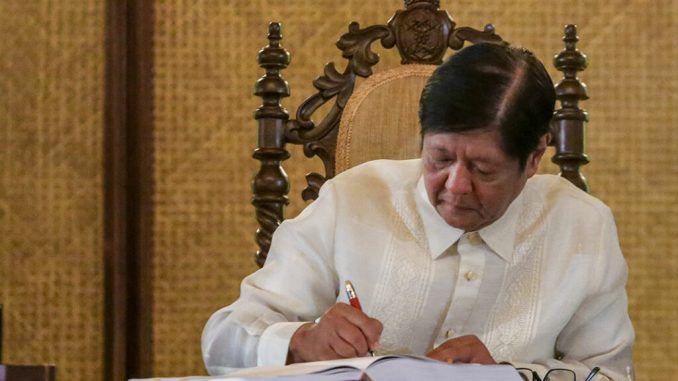
| Published August 7, 2025
On August 4, 2025, President Ferdinand “Bongbong” Marcos Jr. signed Republic Act No. 12231, officially titled the Government Optimization Act. This landmark legislation empowers the executive branch to dissolve, merge, or transfer overlapping or redundant agencies in a bold bid to make government leaner, smarter, and more responsive to Filipino citizens.
A Vision of Streamlined Governance
At its core, the Government Optimization Act aims to minimize bureaucratic duplication, simplify processes, and enhance public service delivery. It formalizes a strategic review of existing agencies—assessing mandates, staffing, operations, and processes—with the goal of optimizing what’s essential and eliminating what’s redundant.
Not Budget Cuts—But Better Performance
Contrary to concerns suggesting mass layoffs, Senate President Francis “Chiz” Escudero clarified that this initiative isn’t about budget trimming. Rather, it’s about transforming the bureaucracy into a well-coordinated, high-performing system that expands opportunities for career growth, upskilling, and role alignment for public servants.
Fighting Corruption Alongside Reform
While streamlining the executive branch is a structural reform, it also aligns with the broader agenda of anti-corruption and good governance. A recent arrest underscores this ongoing campaign: the mayor of San Simon, Pampanga, a high-profile local official, was taken into custody for allegedly accepting an ₱80 million bribe. The case sends a strong message that efficiency reforms and accountability measures must go hand in hand.
The Government Optimization Act could serve as a tool to close loopholes exploited by corrupt practices, especially in agencies where overlapping roles create space for opacity and abuse.
Key Features at a Glance
| Feature | Description |
|---|---|
| Scope of Coverage | All executive branch agencies, bureaus, offices, commissions, and GOCCs not already governed by RA 10149. |
| Exemptions | Teaching and teaching-related roles, uniformed personnel in select departments, the legislature, judiciary, constitutional commissions, the Ombudsman, and LGUs—all exempted from mandatory optimization. Some may opt in voluntarily. |
| COEB Establishment | The Committee on Optimizing the Executive Branch (COEB) will oversee implementation. Chaired by the Executive Secretary and co-chaired by the DBM Secretary, it includes key figures from Socioeconomic Planning, Civil Service, and Anti‑Red Tape Authority. |
| Presidential Authority & Timeline | The President has five years of authority to reorganize the executive branch. |
| Modernizing Services | The law emphasizes digitalization, e-governance, streamlined systems, and simplified regulations to elevate frontline service efficiency. |
What Stakeholders Are Saying
-
Department of Budget and Management (DBM): Secretary Amenah Pangandaman hailed the Act as a “defining moment,” emphasizing its role in bringing government services closer to citizens—faster, better, and with accountability.
-
Senate President Escudero echoed this sentiment: this isn’t bureaucratic purging—it’s about structural reform driving cohesion, agility, and modern public stewardship.
Looking Ahead: The Impact of Optimization
This Act represents more than a legal reform—it’s a call to recalibrate governance for the digital age. The establishment of COEB ensures structured implementation, while DBM’s promise of an impact assessment in three years will help measure the tangible gains of this initiative.
Ultimately, the Government Optimization Act offers a blueprint for a smarter, leaner, and more citizen-centric public sector, positioning the Philippines for more effective, equitable, and spirited governance—where transparency and integrity are expected, not exceptions.
 Implications: What This Means for the Philippines
Implications: What This Means for the Philippines
The signing of the Government Optimization Act signals a major shift in how the Philippine bureaucracy functions—not just structurally, but culturally.
1. Toward a Leaner, Smarter Government
By dissolving or merging redundant agencies, the Act aims to eliminate bottlenecks and streamline operations, potentially speeding up public service delivery. Citizens may begin to see shorter lines, faster processing, and clearer points of contact for government services.
2. Career Realignment for Civil Servants
While the law avoids forced retrenchment, it encourages a re-evaluation of roles and skills. Civil servants may undergo reassignments, upskilling, or integration into more productive departments. This could create anxiety in the short term—but also open up new opportunities for professional growth in the long run.
3. Political Accountability Under the Spotlight
The recent arrest of the San Simon mayor for allegedly accepting an ₱80 million bribe highlights how deeply corruption can take root at all levels of government. Streamlining agencies doesn’t just improve efficiency—it limits the space for corruption by reducing overlapping authority and increasing transparency.
4. Pressure on Local Government Units (LGUs)
Although LGUs are technically exempt from mandatory compliance, this reform may set a precedent and political pressure for local governments to also review their structures. Citizens may begin to question local inefficiencies in light of national reform efforts.
5. The Real Test: Implementation
The law gives the President five years to exercise reorganization authority—but its success hinges on how well the Committee on Optimizing the Executive Branch (COEB) handles execution, communication, and change management. Without political will, resistance from within the bureaucracy could water down the reform’s potential.
6. A Model for Broader Reform
If successful, the Act could serve as a blueprint for broader changes beyond the executive branch—affecting judiciary, legislative offices, and even public-private partnerships in the future.
 Overall Takeaway: A Turning Point for Governance
Overall Takeaway: A Turning Point for Governance
The Government Optimization Act represents more than administrative reshuffling—it marks a critical step toward building a modern, efficient, and accountable Philippine government. By streamlining redundant agencies and pushing for digital transformation, the law seeks to create a bureaucracy that works smarter, not bigger.
Yet, its true value lies in what it symbolizes: a government that is finally willing to confront its own inefficiencies head-on.
The arrest of the San Simon mayor for an ₱80 million bribery case serves as a sharp reminder that structural reform must go hand-in-hand with ethical governance. Transparency, integrity, and public trust must be the pillars of this transformation—not just efficiency.
If implemented with political will and public support, the Government Optimization Act could become a defining legacy of the Marcos administration—a move from bloated bureaucracy to purposeful public service. But without real accountability and measurable results, it risks becoming yet another well-intentioned law lost in the paperwork it set out to eliminate.





Be the first to comment